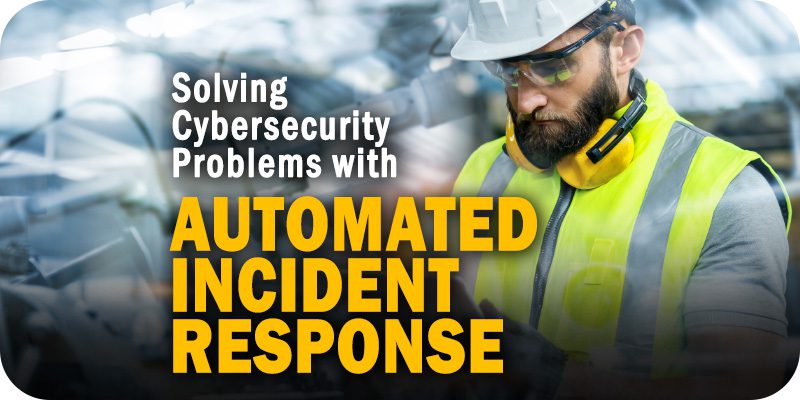Solving Cybersecurity Problems with Automated Incident Response

Solutions Review explores critical problems affecting security teams and how automated incident response can solve them, according to Swimlane.
It seems like every day, we hear a new news story about security and data breaches at major companies around the world. These high-profile cases are a reminder to the public of how critical it is for organizations to take responsibility and protect their systems. Yet those public stories represent just a tiny fraction of the amount of security incidents that plague businesses, employees, and clients alike.
That’s why it’s essential for security teams to have the proper incident response plan in place. Businesses need the right tools in place to alert you to security events as they occur, as well as know how best to respond to incidents that come in. Otherwise, your team will be overwhelmed when it discovers a problem and scramble in an attempt to repair the damage.
This is the ideal situation — but in practice, it’s often not the reality. The sheer bulk of alerts a security team receives on a daily basis often leads to confusion and fatigue. Thus, it’s common to see organizations that delay responding to (or even ignore) crucial alerts because their security personnel are all busy with other tasks. To combat this, security orchestration, automation, and response (SOAR) solution vendors like Swimlane have prepared tools that help lift much of the burden of incident response off of your employees.
Below, we discuss the ways modern security teams are being overwhelmed and the methods by which SOAR tools help mitigate those struggles with automated incident response according to Swimlane’s Automating Incident Response resource.
Widget not in any sidebars
Security teams are facing more pressure than ever before
Every day, security teams are bogged down with discovering and solving issues that occur on their organization’s systems. That task doesn’t become easier over time, and in fact, numerous factors have made it even more of a hassle for security engineers and administrators to handle. Specific areas security teams are struggling in include:
Increasing attack surface area
As businesses grow in scope and scale, they’ll often adopt new technologies and integrate them into their systems. While this drives innovation and product development, it also widens the potential attack surface area of each company. Every new device or software, if not properly secured, becomes a possible vector with which a company can be attacked.
High volume of security alerts
According to Swimlane, large organizations are dealing with between 10,000 and 150,000 security alerts every day. Even with the most dedicated security team, your staff will be hard-pressed to effectively solve even a percentage of these problems. With cyber-crime on the rise, it’s easier and easier for harmful actors to slip through unnoticed while your employees handle other alerts.
Sub-optimal incident response processes and workflows
Threats evolve constantly, often adapting to stimuli and attack in ways security teams and tools aren’t expecting. If your incident response solutions and employees aren’t adapting in the same ways, then these threats will inevitably find a way to bypass your systems. In addition, elements like staff turnover and inconsistent training lead to gaps in security knowledge, widening the entry capability for threats even further.
Overloaded personnel
Monitoring and responding to security alerts is an essential task — but one that can also cause widespread fatigue and mental anguish among your security team. This leads to a high turnover rate among security personnel which, as Swimlane points out, leads to an environment that’s terrible for preventing threats.
Alert triage and overload
When your security staff has an immense number of alerts to deal with and not enough resources to deal with them, alert triaging is inevitable. Employees will triage alerts based on perceived seriousness and impact, leaving the others for another time — or potentially, not solving them at all. It is very easy for security teams to mistakenly ignore critical alerts through this method because they feel too overloaded with everyone else.
How can automated incident response help?
SOAR solutions like the Swimlane platform help security teams rise up to the challenge of managing overload and stress originating from security alerts. These tools automate tedious security protocols and management tasks based on a company’s specific needs and requirements. Non-critical threats or threats that do not require a sophisticated countermeasure can be dealt with automatically by the tool; meanwhile, the SOAR solution can determine which alerts require human intervention and forward them to your team.
A SOAR tool centralizes and automates operations to prevent critical information or tasks from getting lost in the shuffle, as is often the case with manual processes. By using standards-based software and open application programming interfaces, SOAR tools allow you to connect all of your security systems into one integrated platform. This prevents valuable information stored on an unintegrated solution from being lost. It also provides a better return on investment by severely reducing the amount of time spent on each alert, increasing your security team’s throughput in observing, deciphering, and eliminating security issues.






















